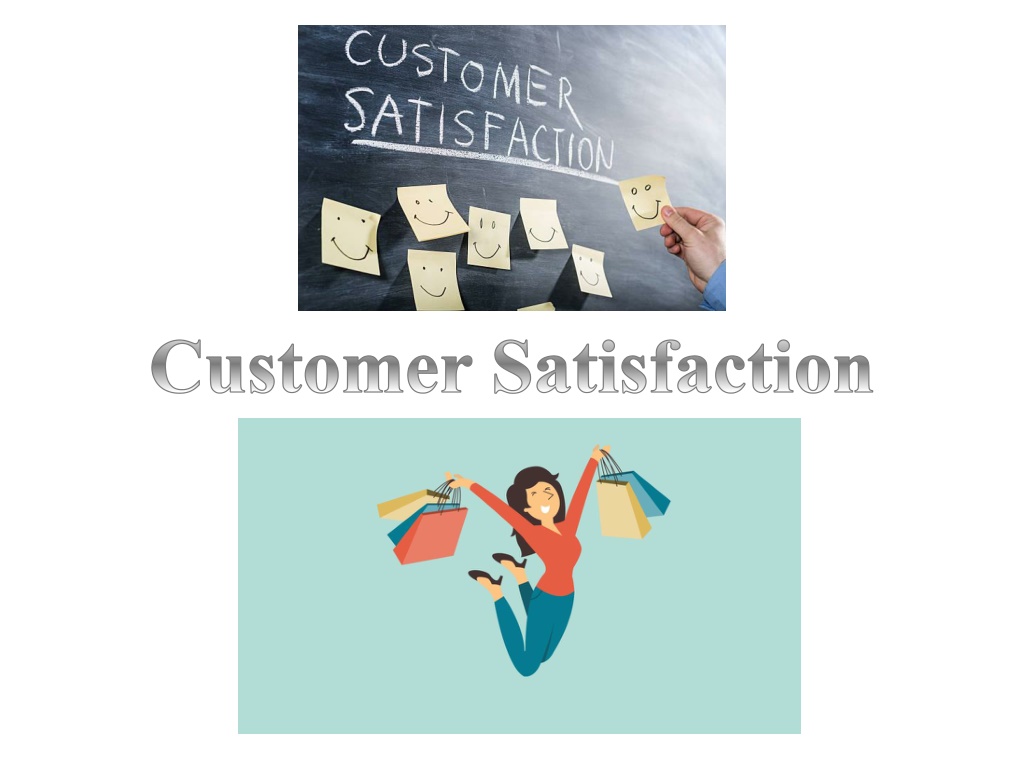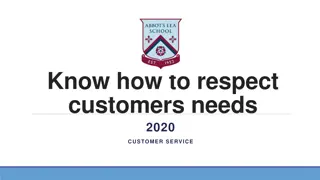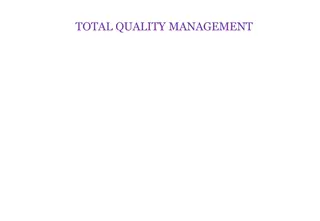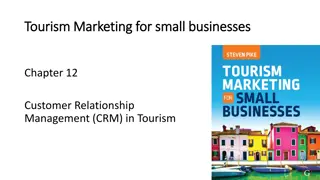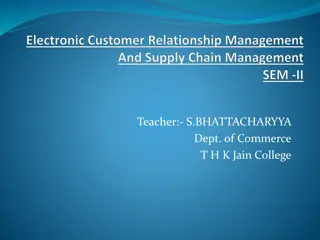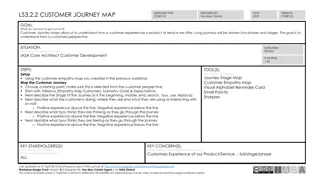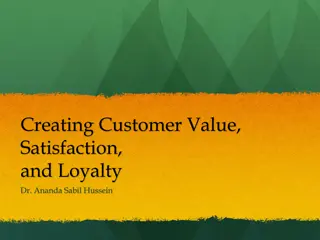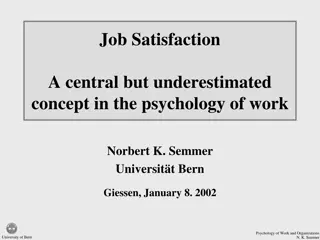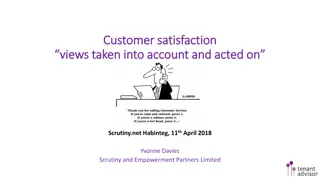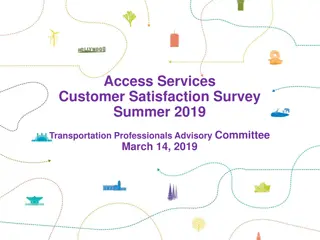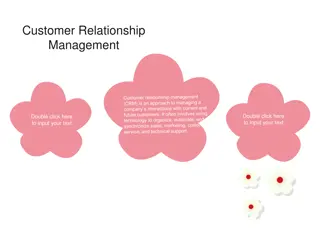Understanding Customer Satisfaction and Its Impact
Customer satisfaction is crucial for businesses to thrive. Different types of customers, such as current, indirect, potential, and lost customers, play a significant role in shaping the success of an organization. Neglecting to measure customer satisfaction can lead to lower sales, reduced profits, and even business closure. Building strong relationships between an organization's perspective and a customer's perspective regarding product quality is vital for ensuring customer satisfaction. Satisfaction is measured by the alignment between customer expectations and the actual product or service received.
Download Presentation

Please find below an Image/Link to download the presentation.
The content on the website is provided AS IS for your information and personal use only. It may not be sold, licensed, or shared on other websites without obtaining consent from the author. Download presentation by click this link. If you encounter any issues during the download, it is possible that the publisher has removed the file from their server.
E N D
Presentation Transcript
Who is Customer? ISO 9001:2005 defined customer as an organization or person that receives our product. However, ISO 9001:2015 defines customer as a person or organization that could or does receive our product or service.
Types of Customer Current Customer: Those who have recently bought our product or availed our services. Regular Occasional Direct Customer: Those customers who buy products directly from the organization without interference of any third party.
Indirect Customer: Those customers that buy organization s product or services through a middleman e.g. a dealer or any organization. Potential Customer: These are those customers who are or might be interested in the organization s product or service, but have not bought the same yet.
Lost Customers: These are those customers who used to buy the organization s product or service but now have ceased to do the same.
Consequences of not measuring customer satisfaction The customer will not buy your product or stop buying it, because his needs are not being sated. Once the customer stops buying your product, the sales of the organization falls. You sell something the customer doesn t desire or is not satisfied with.
Lower sales will lead to lower profits and possibly losses. This will lead to a halt in production. This will make you business incompetent and eventually lead to its shut down in the long run.
Relationship Between Organizations Perspective And Customer s Perspective Regarding Product Quality
What is Satisfaction? Satisfaction is a judgment, an opinion expressed by the customer. The degree of satisfaction reflects the gap between the customer s vision of the expected product, and the customer s perception of the delivered product including other organizational aspects.
Therefore attention should be paid to both Internal measures of quality External measures of customer s view of how well the organization has met the customer s expectations.
The international standard ISO 9001:2015 focuses on customer satisfaction and throws a light on how to achieve the same. Eurotech ACSPL is an IRCA approved training partner that provides ISO 9001:2015 trainings. Start with your quality training with our ISO 9001:2015 Foundation Course.
REGISTRATION To register yourself: Mail Us At: trg@eurotechworld.net OR Call At: +91 9316744482 You can also register yourself by visiting our website: http://eurotechworld.net/trainings/
To know more about customer satisfaction and expectations, watch part 2.
